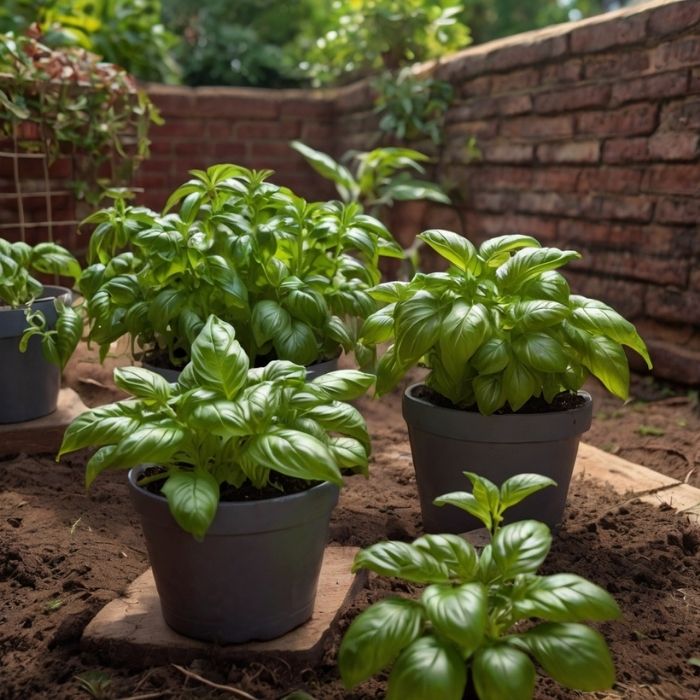The Magic of Sweet Basil Seeds: Health Benefits, Uses, and How to Grow Them
Sweet basil seeds, also known as sabja or tukmaria, are tiny black seeds that pack a nutritional punch. While they may look unassuming, these seeds have been prized for centuries for their medicinal properties, culinary uses, and ease of cultivation. This article dives deep into everything you need to know about basil seeds, from their health benefits to growing them at home.
What Are Sweet Basil Seeds?
Sweet basil seeds come from the basil plant (Ocimum basilicum), a herb widely used in cuisines around the world. Although often overshadowed by chia seeds, basil seeds are just as powerful, offering a range of health benefits and culinary versatility.
When soaked in water, these seeds develop a gelatinous coating, making them a popular ingredient in drinks, desserts, and traditional remedies.
Nutritional Value of Sweet Basil Seeds
Sweet basil seeds are a powerhouse of nutrients. They are low in calories but high in essential nutrients such as:
- Dietary Fiber: Promotes healthy digestion and prevents constipation.
- Omega-3 Fatty Acids: Supports heart health and reduces inflammation.
- Calcium and Magnesium: Strengthens bones and supports muscle function.
- Iron: Boosts energy and helps in oxygen transport in the blood.
- Protein: Aids in muscle repair and growth.
These seeds are also rich in antioxidants, which help combat free radicals and promote overall wellness.
Health Benefits of Sweet Basil Seeds
- Aids in Weight Loss basil seeds are high in fiber, which helps you feel full for longer. Consuming them before meals can curb appetite and prevent overeating.
- Improves Digestive Health
The gelatinous coating formed when the seeds are soaked acts as a natural laxative, easing bowel movements and soothing the digestive tract. - Regulates Blood Sugar Levels
For people with diabetes, sweet basil seeds can slow the absorption of sugar in the blood, helping to maintain stable blood sugar levels. - Boosts Skin Health
Antioxidants in basil seeds protect the skin from damage, reduce signs of aging, and promote a radiant complexion. - Hydrates the Body
When soaked in water, the seeds help retain hydration, making them ideal for summer beverages. - Promotes Heart Health
The omega-3 fatty acids in basil seeds support cardiovascular health by reducing cholesterol levels and improving blood circulation.
Culinary Uses of Sweet Basil Seeds
basil seeds are incredibly versatile and can be used in a variety of recipes. Here are some ideas:
- Refreshing Drinks: Add soaked basil seeds to lemonade, smoothies, or coconut water for a refreshing twist.
- Desserts: Use them as a topping for puddings, yogurt, or ice cream.
- Soups and Salads: Sprinkle the seeds for added crunch and nutrition.
- Baking: Incorporate them into bread, muffins, or energy bars.
One of the most popular ways to use basil seeds is in falooda, a traditional Indian dessert made with milk, rose syrup, vermicelli, and soaked basil seeds.
How to Use Sweet Basil Seeds
Using basil seeds is simple:
- Soak Them: Place a tablespoon of seeds in a cup of water and let them sit for 15–20 minutes. They will swell up and form a jelly-like coating.
- Strain and Rinse: Drain any excess water and rinse the seeds before adding them to your recipe.
Growing Sweet Basil at Home
Cultivating basil for seeds is surprisingly easy and rewarding. Here’s a step-by-step guide:
- Choose the Right Variety
Opt for Ocimum basilicum if you specifically want sweet basil seeds. - Prepare the Soil
Basil thrives in well-draining, nutrient-rich soil with a pH level between 6.0 and 7.5. - Plant the Seeds
Sow the seeds about 1/4 inch deep and cover lightly with soil. Ensure they are spaced adequately to allow growth. - Provide Optimal Conditions
- Sunlight: Basil loves warmth and sunlight. Ensure it gets at least 6–8 hours of direct sunlight daily.
- Watering: Keep the soil moist but not waterlogged. Overwatering can lead to root rot.
- Harvesting the Seeds
Once the plant flowers, allow the blooms to dry. Gently remove the dried flowers to collect the seeds.
Tips for Growing Sweet Basil
- Pinch off the tops of the plant regularly to encourage bushier growth.
- Avoid planting in cold weather; basil is sensitive to frost.
- Use organic fertilizer for healthier plants and better-quality seeds.
Common Questions About Sweet Basil Seeds
1. Are sweet basil seeds and chia seeds the same?
No. While they share similarities, basil seeds are larger and blacker than chia seeds. They also absorb water faster and form a thicker gel.
2. Can sweet basil seeds help with weight loss?
Yes. Their high fiber content helps reduce hunger pangs and promotes a feeling of fullness.
3. Are there any side effects of consuming sweet basil seeds?
In moderation, basil seeds are safe for most people. However, consuming them in excess may cause bloating or discomfort due to their high fiber content. Pregnant women should consult a doctor before including basil seeds in their diet.
Where to Buy Basil Seeds
Sweet basil seeds are widely available in health food stores, Asian markets, and online retailers. Look for organic, high-quality seeds to ensure the best results in your recipes and health regimen.
Final Thoughts
basil seeds are a hidden gem that deserves a place in every kitchen and garden. Packed with nutrients and offering a myriad of health benefits, these tiny seeds can transform your diet and well-being. Whether you’re looking to improve your health, explore new recipes, or cultivate your garden, basil seeds are an excellent choice.
Start incorporating basil seeds into your life today, and experience their magic firsthand

